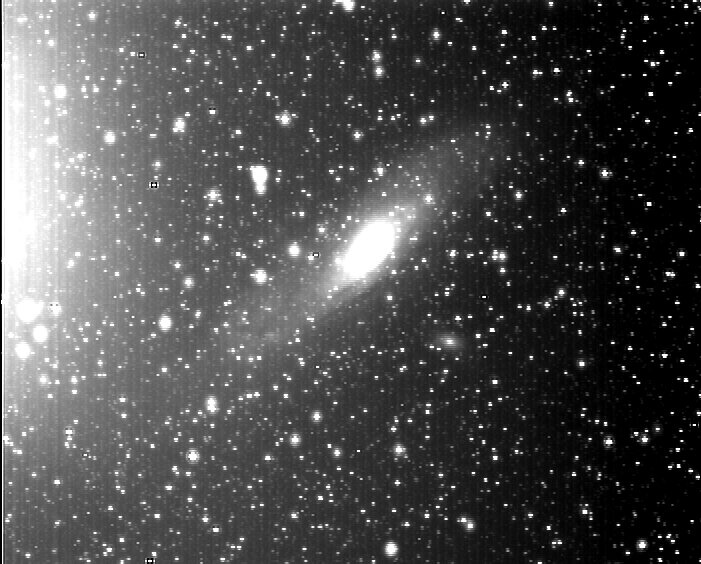
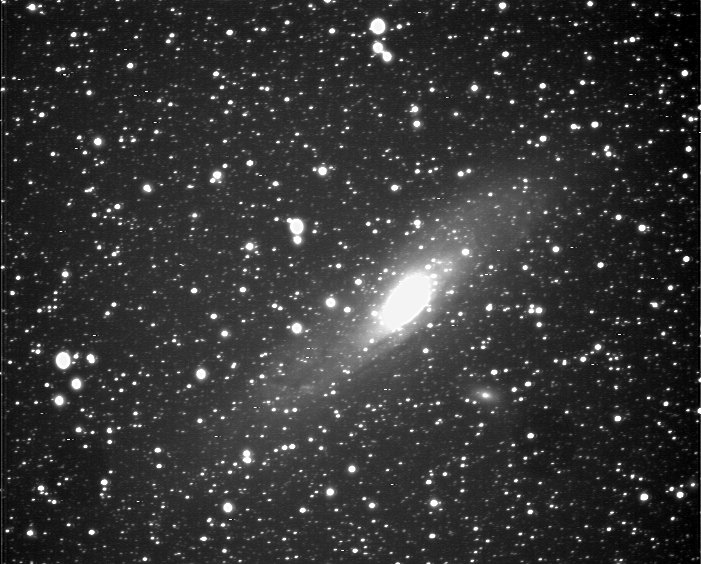
The first comparison with deep-sky targets happened under favorable conditions, a temperature of 0°C and acceptable skies, but with a half moon above the horizon. Both cameras were given sufficient time to reach their operating temperature. Due to the glare from the moon, the watec generated a flat-white image with the default framegrabber settings. I adjusted the settings for the watec and mintron cameras, so that both generated the best possible raw images. With these settings though, both cameras generated completely black/useless dark images, so the shown images are a sum of dark images only, without dark frame subtraction. This causes the background-brightness-gradient and strong bright glow on the left side of the mintron image.
 |
Summed image of 560 raw Mintron images with 2.5 seconds per image, with a 100m/2.8 lens |
 |
Summed image of 139 Watec images with 10.2 seconds per image, with a 100mm/2.8 lens |
As the mount used was well aligned, there was hardly a drift of the scene across the chip, which would have been a usefull way to avoid the vertical variations in brightness and the non-round star images of the Mintron images. The Watec does not have that problem.
The limiting magnitude reached by both cameras is not that different. Still, the difference between the cameras is visible. Certainly, the watec makes it far easier to acchieve aesthetically pleasing images, as the background brightness is uniform and the star-images are not distorted.
The live-image of the Watec is clearly better than that of the Mintron (see below), fainter details are visible, the background is darker and more uniform and the image is also more crisp. For taking long exposures of dsos though, the requirements are somewhat different: The truly interesting comparison between two systems is, to give both cameras the same overall time to take bright and dark images and then compare the resulting processed images.
For this comparison an indoor scene, which could be illuminated in a well controlled way, was imaged for a total of 320seconds with each camera and then identically processed.
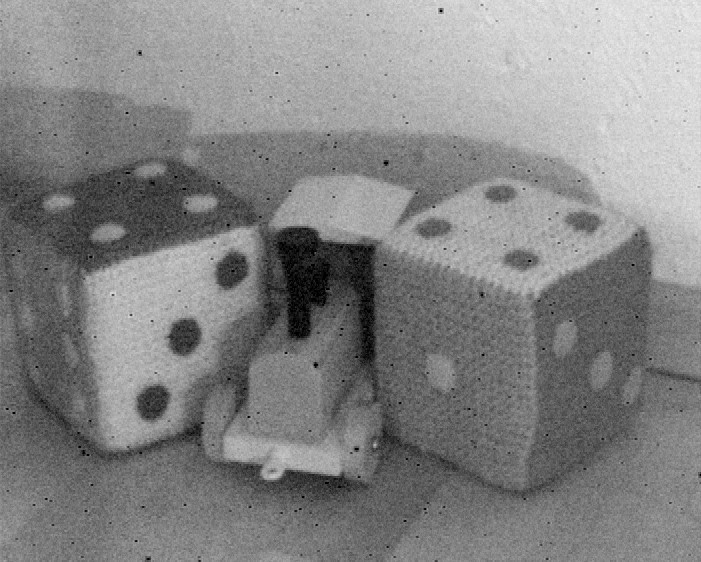 |
Result of the Mintron: The scene is well visible, but the image suffers from serious noise and the hot piXels leave large gaps in the image. At the left edge a curved structure is visible, where the artificial brightening occurrs in the raw images. |
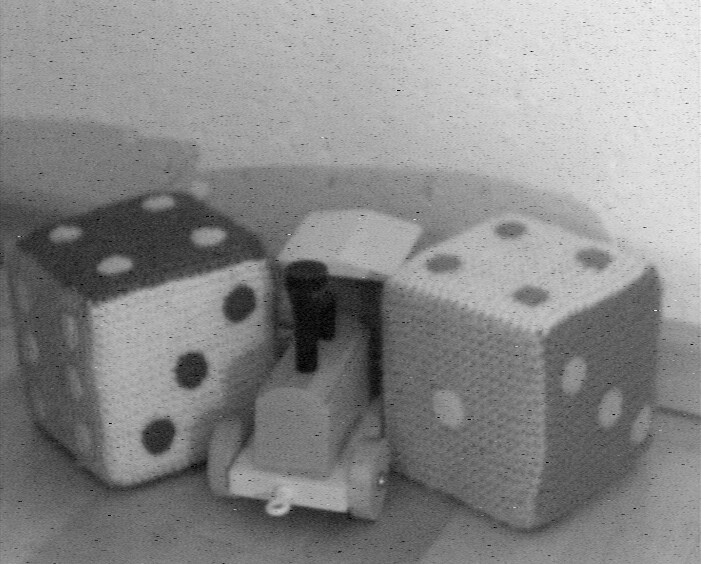 |
Result of the Watec: The image is less noisy then with the Mintron. |
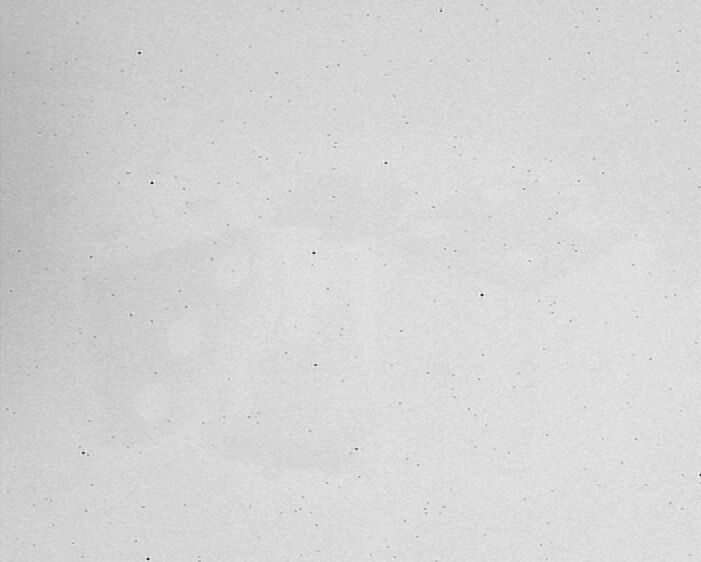 |
Raw-image of the Mintron (inverted), hardly anything can be seen here. |
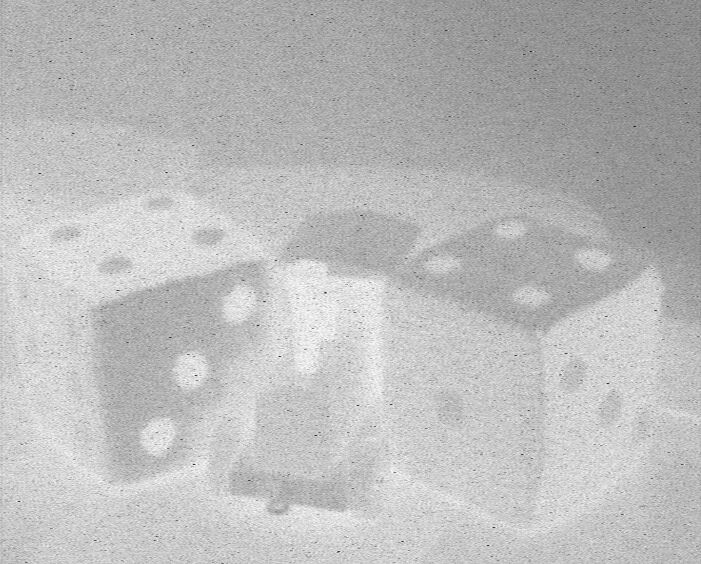 |
Raw-image of the Watec (inverted), the Live-image shows the details of the scene quite well. The advantage of the Watec for live-observation is very obvious. |